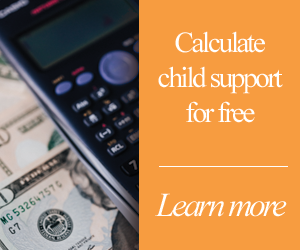Hopefully we’ve convinced you that having a judge decide custody for you is to be avoided if at all possible. The question now is what custody arrangement makes the most sense for your family. As you read more about each custody option you will best be able to determine what fits. In a later section we’ll cover the obstacles you might come up against in getting agreement, and provide suggestions for how you might get around them.
How do different custody options affect children? The late Judith Wallerstein, a respected divorce researcher and author, wrote in her book What About the Kids? that “there is no scientific evidence that the general psychological adjustment of children is related to any particular form of custody.” Her studies, and others, indicate that “the amount time spent with either parent is not relevant to the child’s well-being.” She has found that the factors that are relevant to the child’s adjustment are:
- The child’s psychological health.
- Each parent’s psychological health.
- The quality of the relationship between the child and each parent.
- The quality of the parents’ relationship with each other.
Wallerstein’s conclusions make sense when we consider that we often maintain stronger relationships with distant parents, siblings or friends than we do with the people we see every day. Though they may seem like common sense, her conclusions are not without controversy. A study published in the Journal of Family Psychology by Robert Bauserman concludes that children in joint custody were better adjusted than those in sole custody. Unfortunately, no large-scale, long-term studies exist in this area at this time.
In the absence of conclusive research, separate fathers’ (or, more gender neutrally “separated parents”) and mothers’ rights movements promote the research that best serves their independent causes and attempt to debunk the rest. As in most political debates, the groups generally choose to cast each other’s positions as extreme. One side argues against children going to court with two parents and leaving with only one. The other argues against rigid, arbitrary 50/50 splits of parenting time that are disruptive and damaging to children. The fact is that courts rarely impose either of these extremes. While the advocates may have roles to play in focusing policy-makers’ attention on child custody issues, it is important to not get caught up in their ongoing debate. Maintain your focus on forming an agreement that works best for your family.
An important consideration when developing a custody agreement is what will keep both parents involved with the children. Regardless of what an agreement or court order says, nothing can force a parent to be involved in a child’s life. Even a noncustodial parent who fought for a large amount of visitation may later drift away. There is no requirement that any parent actually exercise visitation rights. Recognizing this reality, it’s important to consider how to best structure your parenting plan to maintain involvement, and to realize that making the plan work as designed will require an ongoing commitment from both parents.
The primary advantage of sole custody, particularly the residential aspect of it, is that it provides a single, stable home environment. Kids appreciate being able to stay with one set of friends, especially if they are fortunate enough to remain in the marital residence and maintain their existing neighborhood friends. Many kids are involved in activities, like athletics, near the home can become difficult to manage if they are frequently away from the area.
The biggest problems with sole custody are related to the challenges it creates in maintaining the involvement of both parents in the child’s life. When a noncustodial parent’s responsibilities and time are limited, he/she may feel less connected with his child. These parents have to work hard to figure out how to maintain special connections with their children, given their limited time together. They can often use phone or email outside of the times they are with their children to extend the connection. Parents are wise not to overdo it though. It’s important to remember that sometimes kids want to be with their friends or play with a new toy more than spending time with either parent. That’s just natural.
Some noncustodial parents have trouble making their limited parenting time work. They may feel uncomfortable carving out a fully formed role in the children’s lives. Are they there just to provide entertainment? Some parents may feel more like weekend babysitters relieving the child’s “real” parent rather than an integral part of the child’s life. This can become even more acute if the custodial parent has remarried. What works will be very individual, and will often require the support of the custodial parent. Just like in intact families, children should spend time with divorced parents engaging in a mix of fun and mundane activities, ranging from hanging out to doing chores.
Another challenge of sole custody that should not be minimized is the burden it places on the parent with primary custody. It is common after divorce for that parent to not only have to handle considerably more childcare without assistance but to also deal with reentering the workforce or going to school to enhance earning ability. The net result can be that kids end up spending more time in day care or with sitters.
In divorced families with joint physical custody the child has two homes and divides his or her time between them. The major benefit in this arrangement is the way it structurally encourages the maintenance of a relationship between the children and each parent. Of course, such relationships aren’t guaranteed, and a forced joint custody arrangement where one parent cares deeply about the children and the other truly has other interests, can do more harm than good.
Another benefit of joint physical custody is the time it provides for each parent to be without the children. In the two career households where joint custody is most common, this freedom allows some parents to focus on career enhancement. Others use the time for socializing or dating. The only stress comes in the potential difficulty of changing gears from being someone with more freedom back to being a full-time parent.
Kids in joint physical custody arrangements also may have difficult shifting between houses. Being in constant transit between houses can get old. Kids can get confused about which house to go to after school. Depending on the kids’ ages, you may need to figure out some system of reminders–perhaps a big calendar or a tag sent each day to school to eliminate this concern from your child’s days. Older kids can get frustrated with moving between homes when they forget to bring a school book or assignment they need, or a piece of clothing they were planning to wear.
Joint physical custody is an expensive arrangement, which explains why it occurs more frequently in upper income families. Kids need dedicated space in each home. They shouldn’t be put in a situation where they are kicking a parent or another person out of bed when they are present. Within reason, their space should also be protected so they feel that things they leave during one stay at the house will still be there when they return. This typically becomes more of an issue when a parent remarries and stepchildren are present.
Joint custody requires more communication between spouses. This can be difficult for couples that are still angry. The communication is required, because children need consistency in things like rules, bedtimes, and diet. Without that consistency, the world can seem confusing, causing kids to develop discipline problems (or worse).
Making and maintaining friends in two neighborhoods can be an overwhelming challenge for some kids. They may end up feeling lonely in one home or the other. Parents can help their children meet neighbors, but there’s no guarantee—the neighborhood kids may or may not accept a part-time resident into their group the way they would a new permanent family. Prior to the arrival of your child in a new neighborhood, do some groundwork by exploring the area. Then when your child arrives, show him or her around; you can work together to get comfortable in the new environment.
Shared custody arrangements have proven to be less stable than sole custody arrangements. Over time, about a third of these plans drift into formal or de facto sole custody arrangements for a variety of reasons. Making joint custody succeed requires time and effort in maintaining communication and coordinating schedules. Parents must organize their lives to support the arrangement, including maintaining residences reasonably close to each other. The relationship between divorced parents needs to be relatively amicable. The old relationship obviously had serious problems that led to the divorce—you will need to be able to work together to support the development of your children. If parents continue to fight after divorce, especially over issues relating to the custody arrangement, the children can have great difficulty adjusting to life after divorce.
Most successful joint custody arrangements occur when both parents were significantly engaged in the parenting during the marriage. Where there has been significantly more caretaking by one parent than the other, entering into a joint custody arrangement can lead to instability in the child’s life as roles change. It is important for anyone advocating joint custody to be certain that both parties are willing to accept the responsibility that it entails.
Although it is rare, some parents have found success with a concept called “nesting,” where instead of the children moving between homes, they stay in one home, and the parents move in and out based on a schedule. This type of arrangement requires a great deal of coordination and cooperation, and can be hard to maintain, especially if one parent remarries. However, the advantage of maintaining consistency for the children may outweigh the inconvenience to the parents.






